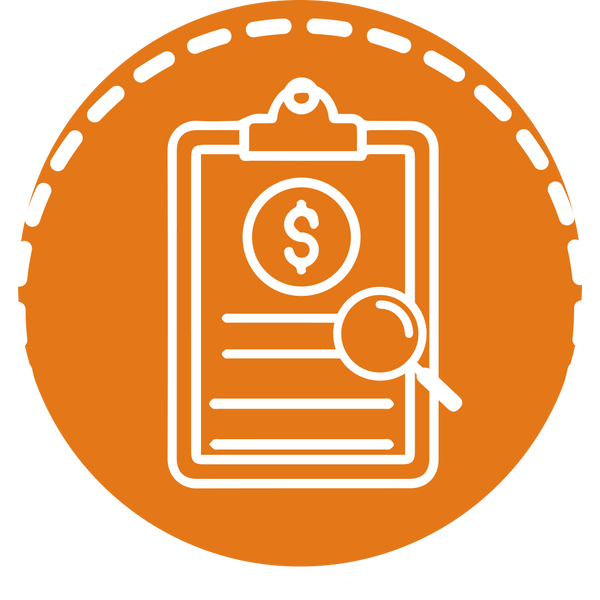
7 Ways STEM Supports Neurodiversity
The greatest scientific advances often come from the world’s most out-of-the-box thinkers. It’s no wonder that STEM instruction lends itself so well to all learners, especially those with neurodevelopmental differences. With STEM, there is no one way to think or learn.
Neurodiversity is the belief that people's different approaches to learning are strengths, as there is no singular “right” way to interact with the world around them (Baumer, 2021). Coined as recently as the early 1990s, this outlook champions differences and has gained significant traction over the past few years. Advocates encourage educators to use learners’ interests and strengths as a catalyst for meeting grade-level standards.

Educators of all grade levels strive to provide learners with materials and activities that meet each of their unique needs. Many have embraced STEM thanks to its flexible and inclusive format that allows them to take instruction down a variety of different paths.
PCS Edventures supports educators looking to embrace and celebrate learners’ many diverse abilities. In this blog post, we’ll reference 3 programs that do this exceptionally well and explore how each supports neurodiverse communities.
Read to find out how programs designed for your grade level help create inclusive learning environments conducive to neurodivergent learners.
For a more expansive look at each of these outstanding products, check out the product pages below:
1. Highlights Learners’ Interests and Strengths
First, let’s take a look at neurodiversity’s biggest pillar — highlighting learners’ interests and strengths.
Everyone has something they’re passionate about. Neurodivergent learners, like those diagnosed with autism spectrum disorder (ASD), often exhibit a profound interest in a specific topic (Kluth & Schwarz, 2008). How can educators best incorporate learners’ passions into valuable and measurable learning experiences?
Look no further than project-based learning. Project-based learning and STEM go hand-in-hand. Centered around real-world problems, STEM actively engages learners through immersive, skill-driven projects.
Grades 1-3:
Choice is a fundamental part of project-based learning and one that’s offered throughout our STEM programs. For example, BrickLAB Brain Builders inspires learners to design their own building to fit within a class-constructed neighborhood. Learners who have an interest in the fire department or post office, for instance, may choose to add their own spin to those facilities. No matter what local business appeals to them, this activity brings individuality into the design process.
Grades 4-8:
Drone Designers: Exploring STEAM Careers invites learners to assume different roles on a drone-designing team. This offers many entry points for collaboration based on their varying interests. As learners work through the project to craft a creative drone performance, they may thrive as the team’s creative director or lead designer, or perhaps they’re more passionate about programming or piloting the drones. No matter which of the roles best fits their interests, such an exploratory project allows them to use their strengths to help their team succeed.
Grades 4-12:
Game Design grants learners full access to the Blocksmith Library. While educators may choose to progress through one curriculum track as a class, those with a neurodiverse population may prefer a more adventurous route, giving learners the option to pursue the track of their choice. Each track teaches its own set of skills while simultaneously permitting users to follow their interests and strengths.
2. Provides Hands-on Learning Tools
STEM instruction is not your classic “traditional” teaching. There’s a lot of movement involved! Neurodiverse individuals often benefit from frequent “state changes” such as going from sitting to standing, group to independent work, or using hands-on tools (Amerstrong, 2012). Doing so gives learners a chance to move around and explore the learning space.
Grades 1-3:
PCS Edventures BrickLAB programs use a manipulative-based approach in all STEM activities, providing ample opportunities for tactile learning. Our signature Perfect Bricks are the ideal tool to engage young hands and minds.
In BrickLAB Brain Builders, learners use logic to determine patterns and solve problems. They work through it all by constructing unique designs or translating abstract ideas into concrete models. Building a visual representation of their learning gives learners different ways to express their understanding. Plus, it’s a ton of fun!
Grades 4-8:
Whether they're using the DroneBlocks app or working with a drone directly, Drone Designers brings hands-on learning to soaring heights. Neurodiverse learners love this technology-based exploration, getting a chance to solve problems in unique ways. Best of all, while testing the choreography for their drone performance, movement is inevitable as they’ll need free rein to move within an open space.
Grades 4-12:
Learners can progress at their own speed through Game Design. Creating their own simulations and games firsthand is the most authentic way to explore the wide world of programming. What’s more, they’ll have plenty of opportunities to work both independently and with peers as they develop and share their creations.
3. Facilitates Neuroplasticity
Neuroplasticity is a brain cell’s ability to change connections and behavior given new information or stimuli (Rugnetta, n.d.). What does this mean for educators? What our learners are capable of doing has more to do with effort than innate talents. This ties directly to the increasingly popular demand for helping learners develop a growth mindset.
With a growth mindset, it’s believed that everyone can learn new skills while participating in new and challenging experiences. The more we explore, the more discoveries we make about ourselves and the world around us. Thanks to its problem-solving approach to learning, STEM provides the perfect learning environment for fostering a strong growth mindset.
All three of our featured products foster the idea that failure is awesome. As learners fail to meet challenges, they must change course to find a new solution given what they learned from their mistakes. In time, they discover that missteps reveal new and creative ways to accomplish tasks.
For more on how STEM instruction fosters growth mindsets and strategies for self-management, check out our blog post: STEM for SEL Support.
4. Provides Different Strategies for Communicating with Group Members
STEM gives learners many opportunities to interact with peers. But merely speaking with others can be a challenge for some neurodiverse learners. How then can educators ensure that those individuals are actively engaged in conversations?
Grades 1-3:
In addition to building a variety of structures, learners can communicate their ideas with drawings. Many of the BrickLAB Brain Builders lessons encourage learners to sketch their models before building them. For some neurodiverse learners, they may choose to take that sketch further, adding detail and color to their drawings to best communicate their design plan. It’s a great way to make any build challenge inclusive.
Grades 4-8:
So much can be said through movement and music. In Drone Designers, learners can communicate their thoughts and feelings through their drones’ choreographed performances. When we expose learners to different ways to share emotions, we give them skills that will last a lifetime.
Grades 4-12:
At the 2021 SIGCSE Technical Symposium, researchers shared their finding that ASD learners participating in a remote video game coding camp reported improved confidence in their programming and communication skills, along with an altogether better experience working with peers (Begel et al., 2021). Game Design provides this experience within any learning environment. As learners become more engrossed in their designs, they often love sharing their thoughts and strategies with those participating in the same or similar simulation builds.
5. Provides Clear Instructions for Tasks
Making sure learners understand directions is a key part of classroom management. For neurodiverse learners in particular, having a clear breakdown of steps is essential for success. For example, we can help learners with ADHD best use their strengths when we share information in short, dynamic segments (Armstrong, 2012). That’s one of the many benefits PCS Edventures’ step-by-step directions have to offer.
What’s more, all three of our featured products include educator guides that help make directions clear for all learners. Each comes with a complete schedule highlighting each part of the hour-long lessons that can be broken down into smaller durations. This simple notation makes a difference for educators working to plan a schedule that best meets learners’ varying needs.
6. Establishes Consistent Routines
Consistency is comforting for educators and learners alike. Neurodiverse learners often benefit when engaged in activities that follow set routines and expectations. When they are prepared for what’s ahead, they are more likely to feel confident in their ability to succeed.
Grades 1-3:
Each of BrickLAB Brain Builders' 12 lessons follow a similar routine — discuss, brainstorm, and build. This is followed by a design challenge. Although topics vary, learners can anticipate what they’ll be expected to do next.
Educators may find it helpful to allow neurodiverse learners to preview materials or design components before the start of the lesson, as this may alleviate stress or overeager behavior. It’s important that they feel comfortable participating in as many parts of the lesson as they can.
Grades 4-8:
Having several groups working all at once can be overstimulating for some. Educators can help by setting clear routines. The educator’s guide for Drone Designers, for example, recommends that educators select a consistent way of getting learners’ attention. Some suggestions include:
- “Hands off”: Learners stop what they are doing and put their hands up into the air
- Clapping a pattern that learners repeat
- Turn the lights off to get learners’ attention
- Countdown: Count backward out loud from 5, with the expectation that everyone is listening by the time you reach 0
Whichever routine you choose, be sure to stick to it throughout the unit as you support neurodiverse learners.
Grades 4-12:
Although each day of Game Design's computer programming comes with new design challenges, learners can expect a consistent routine every day. Each lesson follows the same schedule:
SCHEDULE
- Welcome (10 min)
- Blocksmith Builder (45 min)
- Wrap-Up (5 min)
Since it may be difficult for some to maintain attention for a long time, communicating a short timeframe for instruction before and after active engagement can help such learners focus. Before they know it, it’ll be time to start bringing those lessons to life in their programming creation!
7. Fosters a Kind and Respectful Learning Environment
Last but not least, all learning environments should be safe, inclusive spaces. That’s why PCS Edventures' products suggest modeling and practicing rules and expectations with all learners from day one. Since STEM instruction is collaborative, it’s necessary to ensure all learners are kind and respectful toward one another and make safe choices while working with technology and peers.
Likewise, STEM’s hands-on approach to learning comes with a balance of successes and failures. Model using positive language when something doesn’t go as planned. Practicing positive self-talk can help learners persevere through tough challenges and support others they may see struggling. Everyone can thrive in a kind and encouraging learning environment.
Conclusion:
STEM instruction highlights learners' many strengths, making it the ideal choice for supporting neurodiversity in any learning environment. Give it a try in your classroom or out-of-school program and see just how impactful this hands-on approach to learning truly is.
Whether it’s helping learners develop a growth mindset, aiding in their ability to communicate, or cultivating a respectful learning environment, STEM provides learners with all they need to be their best selves.
How do you support neurodiverse learners?
Let us know in the comment section below!

Author: Jessica Ventre
An experienced elementary educator and science instructional coach, Jessica’s passion for STEM instruction and student-led learning is always at the forefront of her lessons and professional development workshops.











